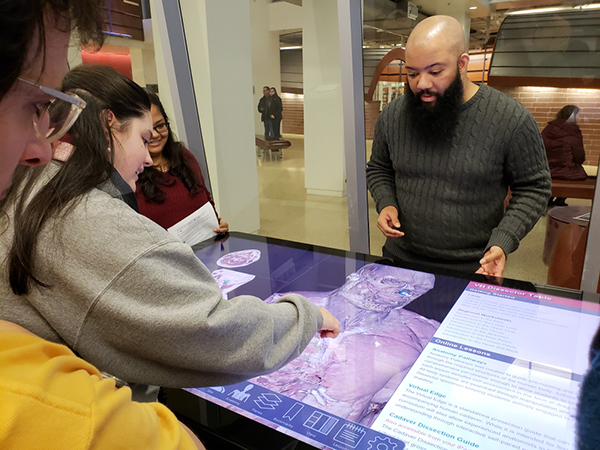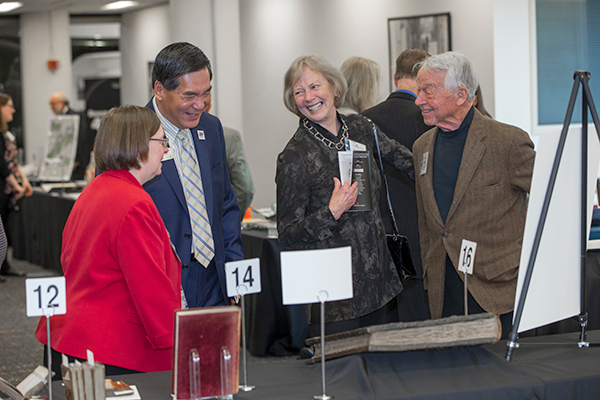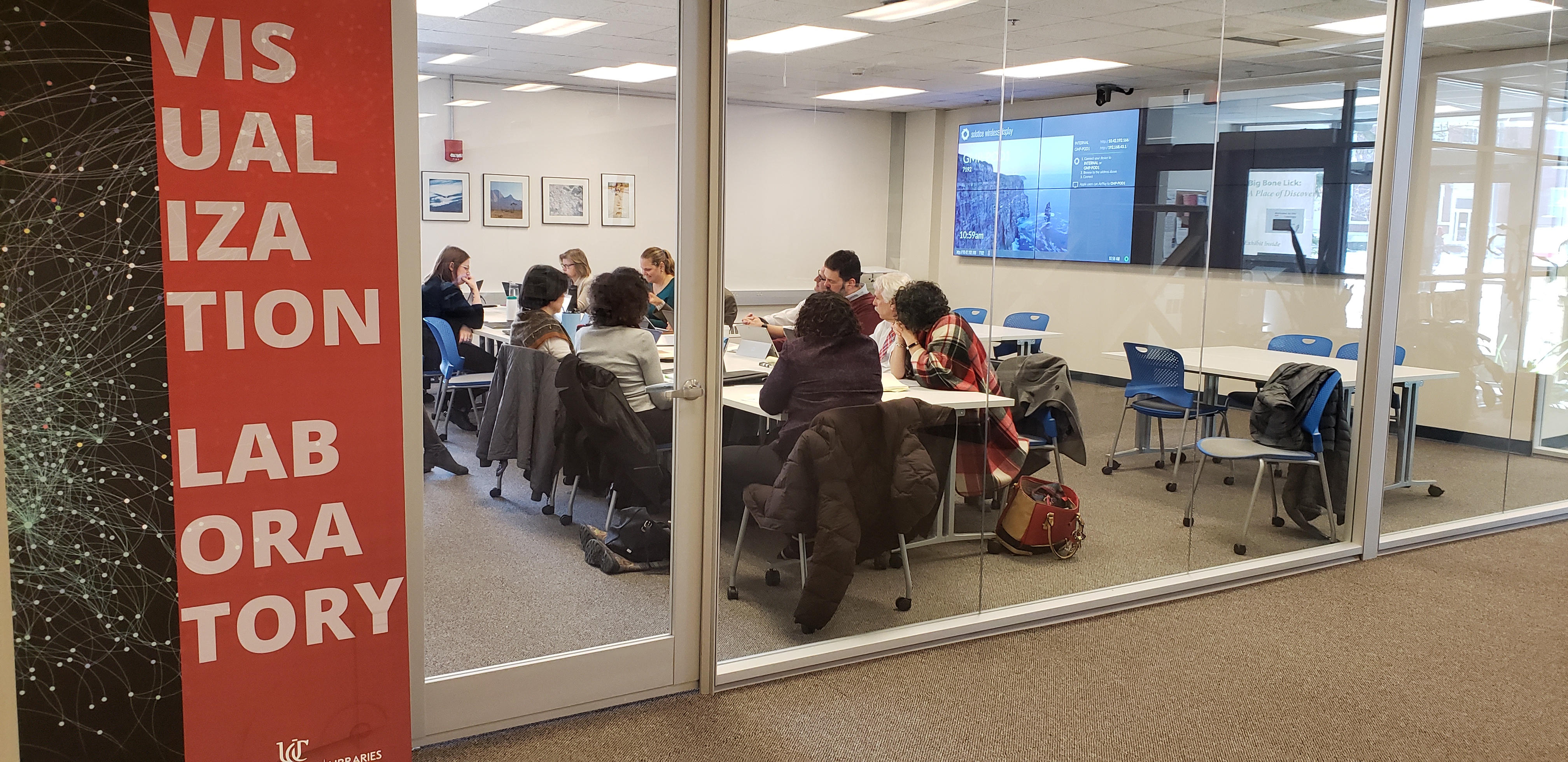
Partnering to Integrate New Technology into Nursing Education
By Don Jason, Alison Trammell and Tiffany Grant
Informationists from the Donald C. Harrison Health Sciences Library (HSL) and nurse educators from the University of Cincinnati Medical Center (UCMC) launched a pilot program that integrates a Sectra Virtual
Anatomy Table into the Critical Care Nurse Residency Program (CCNRP) curriculum.
The CCNRP is a mandatory education program for novice, critical care registered nurses who are hired into UCMC’s intensive care, emergency care or progressive care areas. The cohorts range in size from 12 to 32 members and CCNRP meets every Wednesday and Thursday from 7 a.m. – 3 p.m. for seven weeks. In the past, the course featured traditional lectures and PowerPoints. This changed in February 2019. Now the CCNRP cohorts spend a portion of their time in the Health Sciences Library. The cohorts meet in the Dr. Stanley B. Troup Learning Space and engage in interactive learning that includes hands-on activities and in-class assignments.
The CCNRP course material is divided into several modules. Each module begins with an overview of anatomy and the normal function of the body system. Students learn this portion of the course material on the Sectra Virtual Dissection Table. The body systems covered in the course include cardiac, neurological, pulmonary, gastrointestinal, renal, hematological and endocrine. The course also covers trauma and multi-system organ failure. The CCNRP course instructor, Alison Trammell, clinical program developer, developed lesson plans and storyboards for the table. The table helped Trammell meet one of the course objectives to enhance understanding of organ system function through an interactive learning experience.
The first cohort to experience the Sectra Virtual Anatomy Table and Troup Learning Space completed the CCNRP in mid-April 2019. At the conclusion of the course, the 16 students completed an evaluation. One student shared, “I really liked the Sectra table because I learn better visually and hands-on,
and this table definitely provides both aspects.” Another student wrote, “I felt the interactive activities were the most helpful. Simply reading did not help me retain a high percentage of the
material.”
Another student shared, “I would recommend using this technology because it helped me study anatomy and pathophysiology together. It would be great for other students to have a chance
to experience this.”
Building on this success, the next cohort of CCNRP started in May 2019. This cohort of 24 students meets in the library on a weekly basis.

This innovative pilot program was made possible through collaboration. Alison Trammell worked with Tiffany Grant, assistant director for research and informatics, to learn the functionality and capabilities of the Sectra Virtual Anatomy Table. Trammell developed her curriculum in partnership with Julia Schamer, nurse educator, under the guidance of Lori Rawlings, clinical education manager. Don Jason, health informationist, worked to facilitate this pilot program with the support of Grant and the guidance of Lori Harris, interim director of the Health Sciences Library.
Sectra’s interactive anatomy and clinical imaging solutions provide a platform for learners to experience anatomy in new ways. Through virtual interactions with real bodies, learners are able to gain a deeper understanding of the structural and functional complexities of the human body. The Sectra Virtual Anatomy table is built on real anatomy from the National Library of Medicine’s Visible Human Project® and provides integrated 3-D and cross-sectional anatomy. In addition, the Sectra Education Portal provides a cloud-based repository for clinical imaging and case creation. The Health Sciences Library’s Sectra Table is an effective way to facilitate both independent and interactive small group instruction. Faculty can build new lessons, presets, labels and bookmarks or save screenshots from their home or office computers and devices. Content is immediately synchronized and available to all users on any device.




